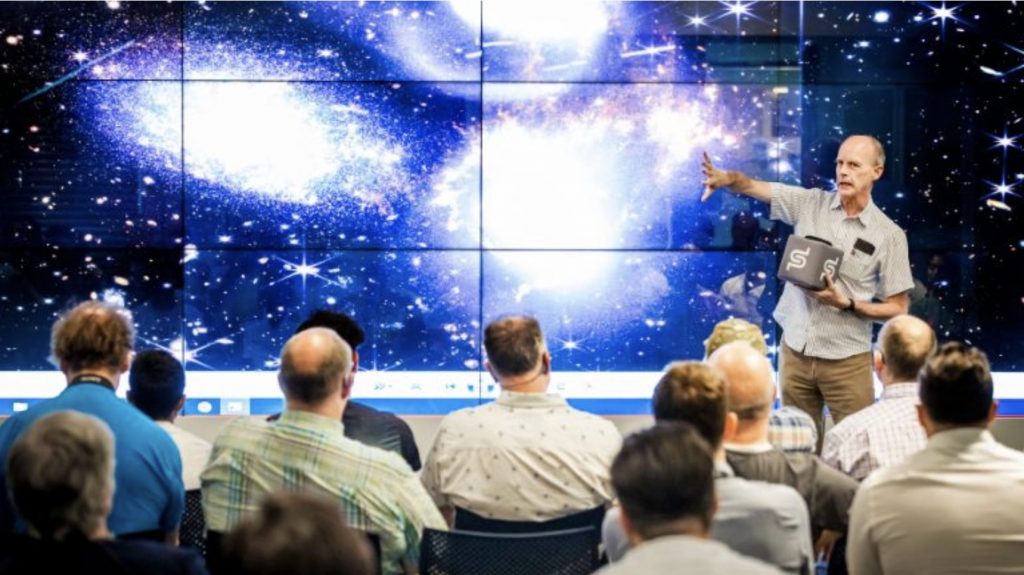Astounding images telling the story of a hidden universe through every phase of its cosmic history have been revealed for the first time at Space Park Leicester.

The pioneering Midlands facility was one of only a handful of venues chosen by the European Space Agency to showcase the first images from the £10 billion James Webb Space Telescope when they were released for the first time yesterday.
The nearly 100-strong audience in Leicester were among the first people to catch sight of the ground-breaking images, including the best view yet of distant galaxies and light from 13 billion years ago.
Showing the deepest and sharpest infrared image of the distant universe so far, views of a ‘stellar nursery’ and a roaring sphere of gas around a dying star were among the sights which drew gasps from the watching crowd.
Professor Paul O’Brien, Head of Astrophysics at the University of Leicester and Space Park Leicester, said: “James Webb Space Telescope is an amazing mission right at the edge of what is technically possible.
“The first light images showed everything from nearby star formation to the most distant galaxies; revealing the beauty of the universe in finer detail than ever before.
“The University of Leicester and Space Park Leicester are proud to be involved and to be able to share this excitement with the next generation of scientists.”

Scientists and engineers from the University of Leicester and Space Park Leicester have been part of the Webb project for more than 20 years and have been involved in the design, manufacture and testing of Webb’s Mid-InfraRed Instrument (MIRI).
Dr John Pye is Senior Research Fellow of the School of Physics and Astronomy at the University of Leicester and Space Park Leicester and has been a member of the MIRI team since its early days.
He said: “It is fantastic to see the superb results from MIRI and all the Webb instruments.
“This is the result of so many years of effort by so many engineers and scientists in the UK and the rest of Europe, by our colleagues in the USA and Canada and at the European Space Agency.”
Also in the audience at yesterday’s landmark free event was Leicester Astronomical Society member Ian Harvey, who said: “The images are mind blowing. The Hubble Space Telescope looked at one area of the sky for two months to obtain ground-breaking images; this blows it out the water in just two hours of imaging.
“The analysis from the experts made the event very special. I’m looking forward to what’s coming next.”
Scientists involved in the project hope its findings will help us to discover how the universe began and how we fit into the cosmos.
Andrew Blain, Professor of Observational Astronomy at the University of Leicester added: “Today’s demonstration data are spectacular. We will soon know so much more about our amazing Universe.
“The step forward is awe-inspiring. So much we have hoped to find out now seems to be in reach.
“It really is a most astonishing tool. Everyone involved in this epic effort, here and around the world should be so proud. Webb is a great example of what we can achieve together.”
Space Park Leicester is the University of Leicester’s £100m flagship space research and innovation facility and is part of the WebbUK consortium.

 Subscribe to Physics & Astronomy's posts
Subscribe to Physics & Astronomy's posts
Comments are closed, but trackbacks and pingbacks are open.